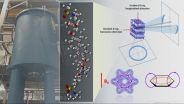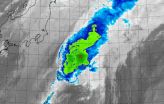(Press-News.org) Pain is a common symptom of cancer and side effect of cancer treatment, and treating cancer-related pain is often a challenge for health care providers.
The Penny George Institute for Health and Healing researchers found that integrative medicine therapies can substantially decrease pain and anxiety for hospitalized cancer patients. Their findings are published in the current issue of the Journal of the National Cancer Institute Monographs.
"Following Integrative medicine interventions, such as medical massage, acupuncture, guided imagery or relaxation response intervention, cancer patients experienced a reduction in pain by an average of 47 percent and anxiety by 56 percent," said Jill Johnson, Ph.D., M.P.H., lead author and Senior Scientific Advisor at the Penny George Institute.
"The size of these reductions is clinically important, because theoretically, these therapies can be as effective as medications, which is the next step of our research," said Jeffery Dusek, Ph.D., senior author and Research Director for the Penny George Institute.
The Penny George Institute receives funding from the National Center of Alternative and Complementary Medicine of the National Institutes of Health to study the impact of integrative therapies on pain over many hours as well as over the course of a patient's entire hospital stay.
"The overall goal of this research is to determine how integrative services can be used with or instead of narcotic medications to control pain," Johnson said.
Researchers looked at electronic medical records from admissions at Abbott Northwestern Hospital between July 1, 2009 and December 31, 2012. From more than ten thousand admissions, researchers identified 1,833 in which cancer patients received integrative medicine services.
Patients were asked to report their pain and anxiety before and just after the integrative medicine intervention, which averaged 30 minutes in duration.
Patients being treated for lung, bronchus, and trachea cancers showed the largest percentage decrease in pain (51 percent). Patients with prostate cancer reported the largest percentage decrease in anxiety (64 percent).
INFORMATION:
Contact Information: Gloria O'Connell
612-863-4801
gloria.oconnell@allina.com
Article: http://bit.ly/10zFR8j
Study shows integrative medicine relieves pain and anxiety for cancer inpatients
2014-11-06
ELSE PRESS RELEASES FROM THIS DATE:
Greater use of social media gets science, scientists noticed, study says
2014-11-06
MADISON, Wis. -- Here is an idea worth following: "share" for tenure; "like" to get cited.
Academic researchers are turning to social media more and more, according to Dominique Brossard, and not just to post family photos or crack wise via hashtag.
"I've been in science communication for a while now, and I am really seeing a change -- especially among the younger scientists -- in their willingness to share their work," says Brossard, a University of Wisconsin-Madison professor of life sciences communication.
It's the venue for that sharing that has inspired work ...
ORNL thermomagnetic processing method provides path to new materials
2014-11-06
OAK RIDGE, Tenn., Nov. 6, 2014 - For much the same reason LCD televisions offer eye-popping performance, a thermomagnetic processing method developed at the Department of Energy's Oak Ridge National Laboratory can advance the performance of polymers.
Polymers are used in cars, planes and hundreds of consumer products, and scientists have long been challenged to create polymers that are immune to shape-altering thermal expansion. One way to achieve this goal is to develop highly directional crystalline structures that mimic those of transparent liquid crystal diode, or ...
The tiger beetle: Too fast to see
2014-11-06
PITTSBURGH--Speed is an asset for a predator. Except when that predator runs so fast that it essentially blinds itself.
The tiger beetle, relative to its size, is the fastest creature on Earth. Some of these half-inch-long beetles cover about 120 body lengths per second (at about five miles per hour). The fastest human can do about five body lengths. To take the sprinting gold from the tiger beetle, a person would have to hit 480 miles per hour.
BUT! The tiger beetle has a problem. At peak speeds, everything becomes a blur. They can't gather enough light with their ...
Black, Hispanic kids underrepresented in autism identification
2014-11-06
LAWRENCE -- The number of children diagnosed with autism has increased in recent years, but a new study co-authored by a University of Kansas professor shows that while the number of students with autism increased in every state from 2000 to 2007, black and Hispanic children were significantly underrepresented.
Jason Travers, assistant professor of special education, co-authored a study that analyzed administrative identification of autism in every state under the Individuals with Disabilities Education Act for the years 2000 and 2007. The disparity in the odds of white ...
Who will come to your bird feeder in 2075?
2014-11-06
The distribution of birds in the United States today will probably look very different in 60 years as a result of climate, land use and land cover changes.
A new U.S. Geological Survey study predicts where 50 bird species will breed, feed and live in the conterminous U.S. by 2075. While some types of birds, like the Baird's sparrow, will likely lose a significant amount of their current U.S. range, other ranges could nearly double. Human activity will drive many of these shifts. The study was published today in the journal PLOS ONE.
"Habitat loss is a strong predictor ...
NASA sees Tropical Storm Nuri resemble a frontal system
2014-11-06
NASA's Terra satellite passed over Tropical Storm Nuri on Nov. at captured an infrared picture of the storm. The storm looked more like a frontal system as it stretched from northeast to southwest.
The Moderate Resolution Imaging Spectroradiometer or MODIS instrument that flies aboard NASA's Terra satellite flew over Nuri on Nov. 6 at 1240 UTC (7:40 a.m. EST). The MODIS image showed some strong thunderstorms remaining in a small area around Nuri's center, but the storm appeared stretched out from northeast to southwest. Wind shear was affecting the storm, stretching it ...
'Rewriting' the way to make natural drug compounds
2014-11-06
(SALT LAKE CITY)--One of the big hurdles in bringing drugs to market is the difficulty of producing large enough quantities of potential compounds to conduct clinical trials. This is particularly true with compounds made by organisms, which usually are produced in exceedingly small amounts and are difficult to synthesize in the laboratory.
Researchers from the University of Utah College of Pharmacy have made an important stride in addressing those problems. In a study in ACS Synthetic Biology, researchers led by Eric W. Schmidt, Ph.D., professor of medicinal chemistry, ...
NASA see birth of Tropical Cyclone 5B in Bay of Bengal
2014-11-06
The fifth tropical cyclone of the Northern Indian Ocean season formed in the Bay of Bengal as NASA's Terra satellite passed overhead and captured an image of the storm.
When Terra passed over Tropical Cyclone 5B on Nov. 6 at 05:05 UTC (12:05 a.m. EST), the MODIS instrument aboard took a visible image of the storm. The MODIS image showed a concentrated storm with strong thunderstorms circling tight around the center and in the northeastern quadrant.
By 1500 UTC (10 a.m. EST), Tropical Cyclone 5B was located near 13.4 north latitude and 87.9 east longitude. That's about ...
Study highlights prevalence of mistreatment between nursing home residents
2014-11-06
NEW YORK (November 6, 2014) -- Inappropriate, disruptive, or hostile behavior between nursing home residents is a sizable and growing problem, according to new research from Weill Cornell Medical College and Cornell University.
The study found that nearly one in five nursing home residents were involved in at least one negative and aggressive encounter with one or more fellow residents over the previous four weeks. These included acts of verbal or physical abuse, inappropriate sexual behavior, or invasion of privacy, among other incidents, known collectively as resident-to-resident ...
Denying problems when we don't like the political solutions
2014-11-06
DURHAM, N.C. -- There may be a scientific answer for why conservatives and liberals disagree so vehemently over the existence of issues like climate change and specific types of crime.
A new study from Duke University finds that people will evaluate scientific evidence based on whether they view its policy implications as politically desirable. If they don't, then they tend to deny the problem even exists.
"Logically, the proposed solution to a problem, such as an increase in government regulation or an extension of the free market, should not influence one's belief ...


